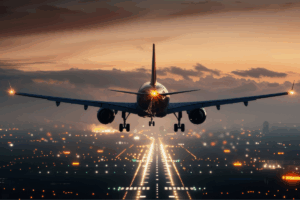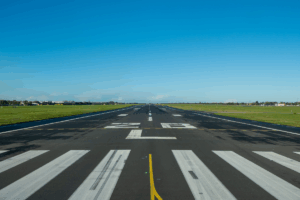When the Wright brothers successfully took wing in 1903, they focused solely on getting their “flying machine” off the ground and sustaining flight for as long as possible. They couldn’t have realized at the time that the technical revolution they had just given birth to was not just in aviation itself, but also in the innovations surrounding safe airport operations, especially during landings.
A critical part of airport safety is the runway lighting system, which typically indicates the runway edge, threshold, centerline, and touchdown zone to pilots. With this lighting system in place, the chances of accidents on the tarmac during takeoff, landing, and aircraft movement are minimized, especially at night and when visibility is poor at other times.
As the airline industry has grown over the past century, with more commercial aircrafts in the air than ever before, so has the need for more tech-based runway lighting solutions. The good news is that runway lighting technology has significantly evolved since the first installation of approach lighting systems in the 1930s.
Let’s look at some of the most game-changing technologies in airport lighting that are in use today.
LED Technology
Ask any lighting expert: no recent innovation has transformed their industry as much as light-emitting diode (LED) technology. Airports relied on halogen bulbs to light their runways for several decades until LEDs grounded their use altogether.
The LED revolution didn’t happen just for the sake of change; LEDs do offer airports several tangible benefits that other lamps simply can’t. For example, LEDs consume up to 75 percent less energy than incandescent or halogen bulbs, adding up to significant energy savings for airport operators, especially since many runway lighting systems operate 24/7.
Additionally, LEDs are seeing service hours in excess of 50,000 and in some cases up to 100,000 compared to only 2,000 hours for halogen lamps, saving airports money by reducing the frequency of replacing bulbs. They are also more durable than halogen and less prone to damage caused by heavy vibration, inclement weather, or physical impact, all common concerns on the runway.
Perhaps most importantly, LEDs improve aircraft safety. With their superior light output and color accuracy, runway and taxiway markings and signs are visible even in darkness, fog, rain, and snow.
Adaptive Lighting Systems
Way back when our industry was in its infancy, runway lighting was a simple matter of turning the lights on. While this approach worked well for decades, the need for more sophisticated systems grew as the airplane industry took off, creating more air traffic around the clock under challenging conditions that affect runway visibility.
The need for more dynamic lighting control gave birth to adaptive lighting. These advanced systems use sensors to collect data on outside weather conditions, such as fog, rain, or snow, and automatically increase lighting brightness to optimize pilot visibility. Conversely, they will also dim when the weather is clear, cutting down on energy use. Better lighting control also reduces light pollution, which improves the quality of life for nearby communities and minimizes the effect of airport lighting on local ecosystems.
Integrating airport lighting systems with Automated Surface Detection Equipment (ASDE) is another example of how adaptive lighting can optimize airport operations. ASDE monitors the presence of aircraft and surface vehicles on the runways and taxiways, and automatically adjusts the lighting based on ground traffic conditions. The ability to activate specific lights to guide an aircraft pilot safely along the runway enhances situational awareness and reduces the risk of runway incursions.
Adaptive lighting systems can also be used to feed data to air traffic controllers, who can then manually adjust airport lighting based on situational needs during aircraft approach or ground movement.
Read More: Integrating Automated Surface Detection Equipment With Your Runway Lighting System
Wireless Airport Lighting Control And Monitoring
As wireless devices become more commonplace in our everyday lives, it was only a matter of time before airports began adopting wireless technology to help manage their runway lighting systems.
The benefits to the switch are numerous. For example, wireless systems don’t require a complex underground wiring network, making installation and maintenance much easier. Also, the technology provides time monitoring, diagnostics, and failure alerts to airport technicians, who can respond quickly to issues without physically inspecting each light, improving repair time.
Airport lighting technology continues to evolve at a pace where it seems difficult to keep up. When you want to explore the newest in airport light technology, talk to the experts at Airport Lighting Company. Our highly experienced and qualified technicians can provide practical, cost-effective airport lighting and power equipment solutions to ensure your runway and taxiway lighting operations run smoothly, efficiently, and safely.
Call Airport Lighting Company For The Latest In Airport Lighting Technology
The Airport Lighting Company team is standing by to answer your questions about how our tech-based products can help improve the safety, reliability, and efficiency of your runways. Call 315-682-6460 for fast, friendly service you can count on.


